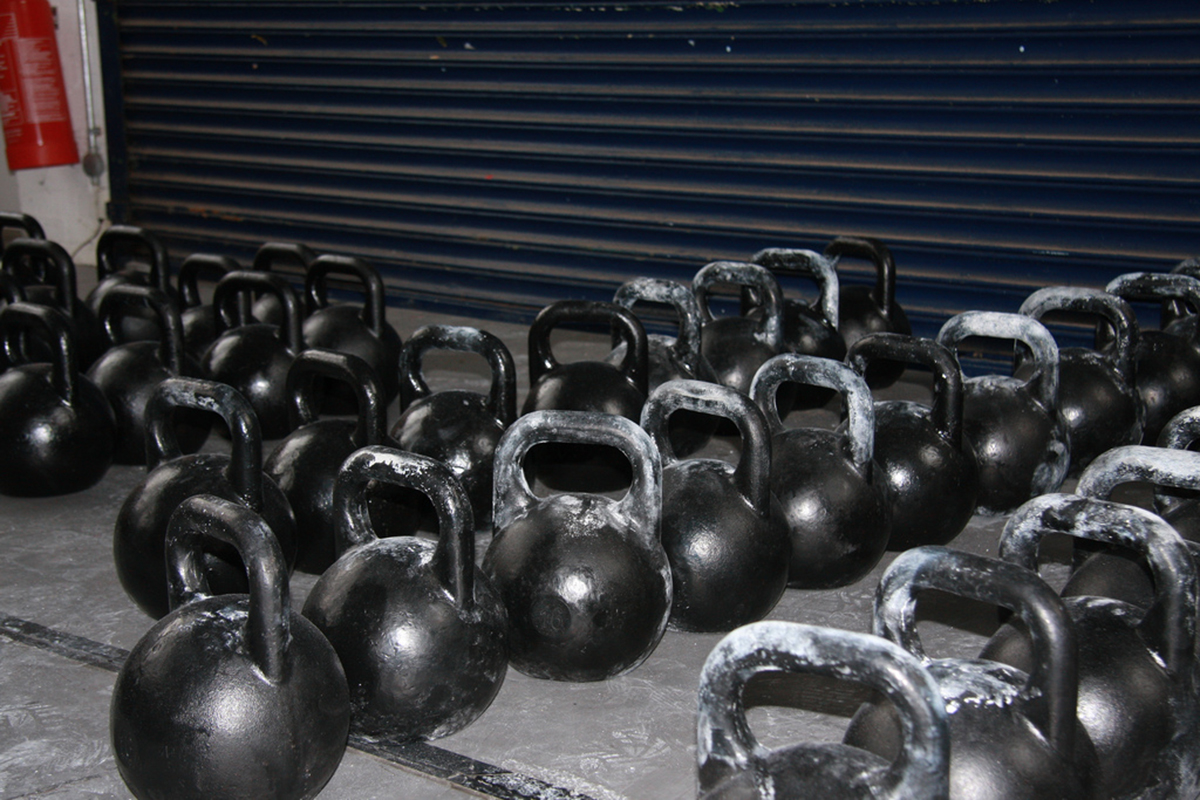Table of Contents
I’ll assume you already now how to do a swing. If you don’t, check out the site for how-tos or ask me in the comments or on Google+ and I’ll put some tutorial material your way.

You should end up ‘square’ – that is, with about as much width between your feet side to side as length from the front foot to the back.
This isn’t a split like a split-jerk: you need room to put the kettlebell between your legs!
If you can use a bell a little lighter that you’re used to til you get used to the movement. Try a couple of two-handed swings in each stance – left and right leading - finding out where you need to be balanced to do it right.
Chances are you need to bend your legs slightly more than usual.
The next step is to do the split swing with the bell in your back hand. If you’re standing with your left foot forward, hold the bell in your right hand. Swing as usual, except for foot placement.
At the top, make sure that you fire your right glute hard, as hard as you can. Feel a slight stretch in your right hip flexor, and make sure that your hips are square at the top of the movement.
When I did these the first time I found out that I have a weak left glute and a weak right hamstring.
If you’re anything like me, then, this exercise will be kind of humbling to begin with. To make sure that you’re not making things worse, take a break between sets and do the classic static hip flexor stretch or the box hip flexor stretch if you prefer it, and test your stance before you swing. Keep your back heel off the floor and your lead leg in a straight line from your hip to your middle toe. Knee tracking over your toes is much less of an issue than letting your lead knee track from side to side or your lead foot turning. That’s your knee getting hurt down the line, so don’t let it happen.
Read More: Debunking The American Swing
I’ll follow this piece up with another showing the carryover possibilities of the split swing, but if you’ve found your own uses for it why not let me know in the comments?
- Photo courtesy of Ken Liu by Flickr : www.flickr.com/photos/klfitness/1355722225/
- Photo courtesy of Ken Liu by Flickr : www.flickr.com/photos/klfitness/2865213825/


Your thoughts on this